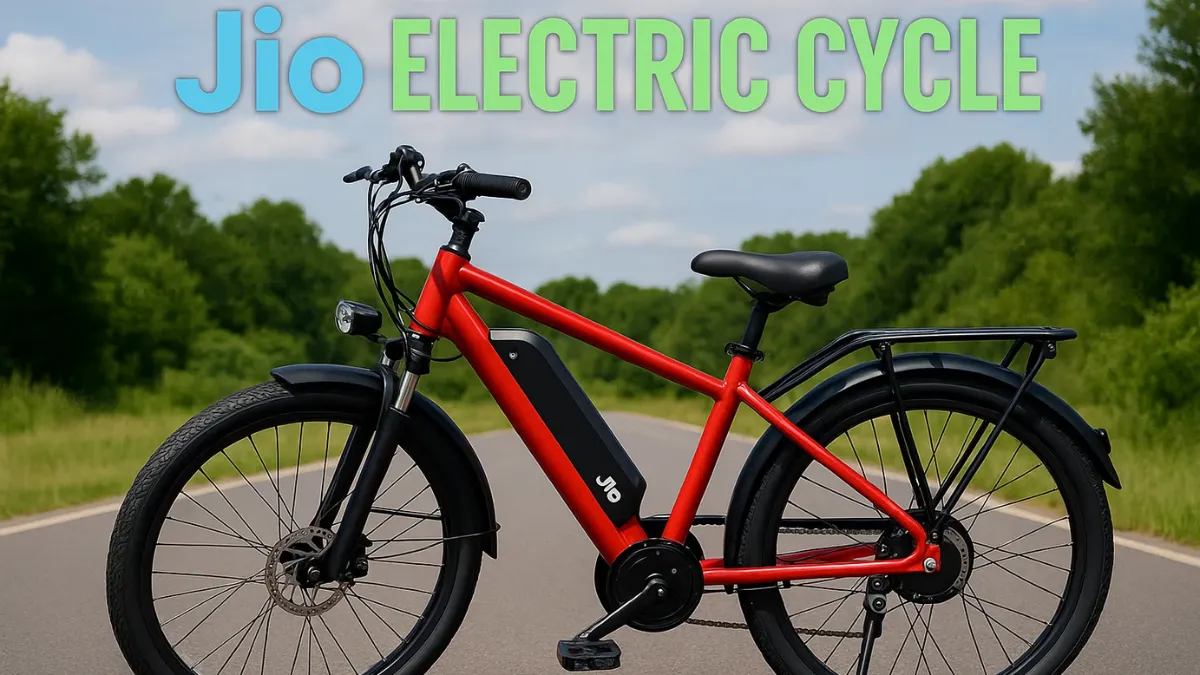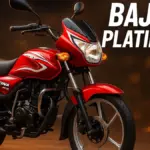India’s urban mobility is undergoing a silent but powerful transformation. With increasing traffic congestion, rising fuel costs, and growing environmental awareness, there’s an urgent need for smart, efficient, and sustainable modes of transport. Enter the Jio Electric Cycle — a revolutionary concept that aims to change the way India commutes, one pedal at a time.
While Jio is best known for its game-changing impact on telecom and digital infrastructure, the brand is now setting its sights on sustainable transportation. The Jio Electric Cycle represents more than just a product — it’s a mobility ecosystem designed to be affordable, connected, efficient, and accessible for every Indian.
In this in-depth feature, we explore everything about the Jio Electric Cycle — from its imagined design and performance capabilities to its smart features, target audience, and potential impact on India’s mobility landscape.
Why an Electric Cycle? The Case for Sustainable Micromobility
Before diving into the product, let’s understand the need for a solution like the Jio Electric Cycle.
India’s cities are witnessing a surge in two-wheeler ownership, but it’s also leading to increased pollution, traffic congestion, and fuel dependency. Public transport systems are either overburdened or underdeveloped in many areas. The gap between short-distance commuting and eco-friendly transport solutions has left millions relying on motorcycles, scooters, or rideshares for even the smallest trips.
Electric cycles (e-bikes) fill this gap perfectly:
- They require no license or registration
- They cost far less than electric scooters or bikes
- They offer health benefits through pedal assist
- They have negligible running costs
- They are ideal for students, delivery workers, and short-distance commuters
Given Jio’s track record in disrupting industries with scale and affordability, the idea of the Jio Electric Cycle could be India’s next major mobility breakthrough.
Design: Built for the Everyday Indian
The Jio Electric Cycle is expected to be minimalistic, sturdy, and lightweight, tailored for the rough and varied conditions of Indian roads. The design emphasizes function over form, with a focus on durability, rider comfort, and safety.
The cycle is likely to feature:
- A steel or aluminum alloy frame for strength
- All-terrain tyres suitable for city and rural roads
- Ergonomic saddle with adjustable height
- Front and rear LED lights for night riding
- Mudguards and chain cover for practicality
- Cargo rack or basket for daily utility
- Anti-theft lock integration for added security
It’s a design that doesn’t scream tech but quietly integrates it — perfect for students, workers, and anyone looking for affordable urban mobility.
Electric Powertrain: Pedal When You Want, Power When You Need
At its heart, the Jio Electric Cycle would feature a hub motor (250W or 350W), with options for both pedal-assist and throttle-based operation.
Pedal-assist allows riders to cycle with minimal effort, with the motor kicking in to reduce the physical strain. This feature is ideal for elderly users, delivery workers, or those commuting long distances.
The throttle mode offers scooter-like acceleration at the twist of a handle — useful in traffic or uphill terrain.
The electric cycle may offer three riding modes:
- Pedal-only (for exercise or battery conservation)
- Pedal-assist (for mixed-effort riding)
- Full electric/throttle (for maximum ease)
This hybrid approach offers flexibility, letting users choose how much they want to pedal — making it both a fitness tool and a daily commuter.
Battery and Charging: Powering Daily Life, Silently
The Jio Electric Cycle is envisioned to be powered by a removable lithium-ion battery pack, placed either in the downtube or beneath the rear rack for balanced weight distribution.
Key expectations from the battery setup:
- Range: 40–60 km per charge (depending on mode)
- Charging Time: 3–4 hours using a regular wall socket
- Life Cycle: 500–800 charge cycles
- Removable: For easy indoor charging
With electricity being significantly cheaper than petrol, the running cost could be under ₹0.10/km, making it one of the most economical vehicles available.
Jio could also leverage its digital ecosystem to set up battery swap stations or partner with local kirana stores to provide last-mile charging solutions, democratizing access even in Tier 2 and Tier 3 cities.
Smart Connectivity: Jio IoT Integration
What truly sets the Jio Electric Cycle apart from traditional e-bikes is its connected smart features. Using Jio’s IoT (Internet of Things) platform, the cycle is imagined to support features typically reserved for high-end vehicles:
- Jio Mobility App (connected via Bluetooth or SIM)
- Real-time location tracking
- Battery status and range prediction
- Geo-fencing alerts
- Ride history and performance stats
- Remote lock/unlock
- SOS alerts for emergencies
- Digital Dashboard (integrated into the handlebar or smartphone mount)
- Speed, distance, mode, battery level
- Navigation and turn-by-turn directions
- Voice Assistant Integration
- Control ride modes or check battery by voice
These smart features help users maintain the cycle, track usage, and add a layer of convenience never seen before in this segment.
Affordability: Powered by Scale and Purpose
Jio’s disruptive pricing in telecom is legendary — and it’s likely the company would adopt a similar strategy here.
While most electric cycles in India cost between ₹30,000 to ₹60,000, the Jio Electric Cycle could be priced as low as ₹20,000 to ₹25,000, thanks to:
- In-house manufacturing
- Vertical integration in battery tech
- Existing Jio distribution and service networks
- Govt. subsidies on electric mobility
By making electric cycles affordable for students, gig workers, delivery agents, and rural commuters, Jio could unlock a new era of mass adoption.
Target Audience: Mobility for Every Indian
The Jio Electric Cycle isn’t just for urban millennials. Its potential use cases are widespread:
- Students commuting to schools and colleges
- Delivery agents needing affordable logistics solutions
- Senior citizens seeking a mobility boost
- Office-goers avoiding traffic and saving on fuel
- Rural users needing short-range, low-cost mobility
- Eco-conscious consumers switching to green transport
Its inclusive design and pricing ensure that it’s not a product for a niche — but a solution for the masses.
Sustainability and the Bigger Picture
The Jio Electric Cycle is a step in the right direction for India’s climate goals. Consider these advantages:
- Zero tailpipe emissions
- Lower carbon footprint compared to motorcycles
- Reduced traffic congestion
- Less noise pollution
- Encourages active lifestyle through pedal-assist
If adopted at scale, e-cycles like this could dramatically reduce India’s urban emissions and ease pressure on public transport networks.
Jio could also integrate solar charging hubs in rural areas or offer cycle leasing models, making eco-mobility scalable and sustainable.
After-Sales and Ecosystem: Jio’s Strength
Reliance Jio already has a pan-India service and distribution network, thanks to its telecom, retail, and digital arms. This infrastructure could easily be adapted to support:
- On-site servicing or mobile workshops
- Battery replacement programs
- Subscription or EMI models via Jio Finance
- In-app customer support and remote diagnostics
By combining hardware with digital services, Jio can deliver not just a product, but a mobility-as-a-service (MaaS) solution for the masses.
Challenges and Solutions
Launching a product like the Jio Electric Cycle at scale isn’t without challenges:
- Public awareness and education
- Infrastructure for charging and repairs
- Durability across terrains and weather
- Battery disposal and recycling
However, Jio’s scale, investment capability, and tech ecosystem give it an edge. With the right collaborations and policy backing, these challenges are addressable.
Conclusion: The Future of Commute Is Here
The Jio Electric Cycle is more than just a bicycle with a battery — it’s a visionary approach to solving India’s urban mobility crisis. Affordable, intelligent, and environment-friendly, it symbolizes the next generation of transportation that is inclusive, sustainable, and digitally empowered.
By combining cutting-edge tech, nationwide accessibility, and Jio’s commitment to affordability, this e-cycle could become as disruptive in transportation as Jio was in telecom.
Whether you’re a student in Lucknow, a delivery partner in Bengaluru, or a daily commuter in Mumbai, the Jio Electric Cycle might just be your next big move — for your wallet, your health, and the planet.








